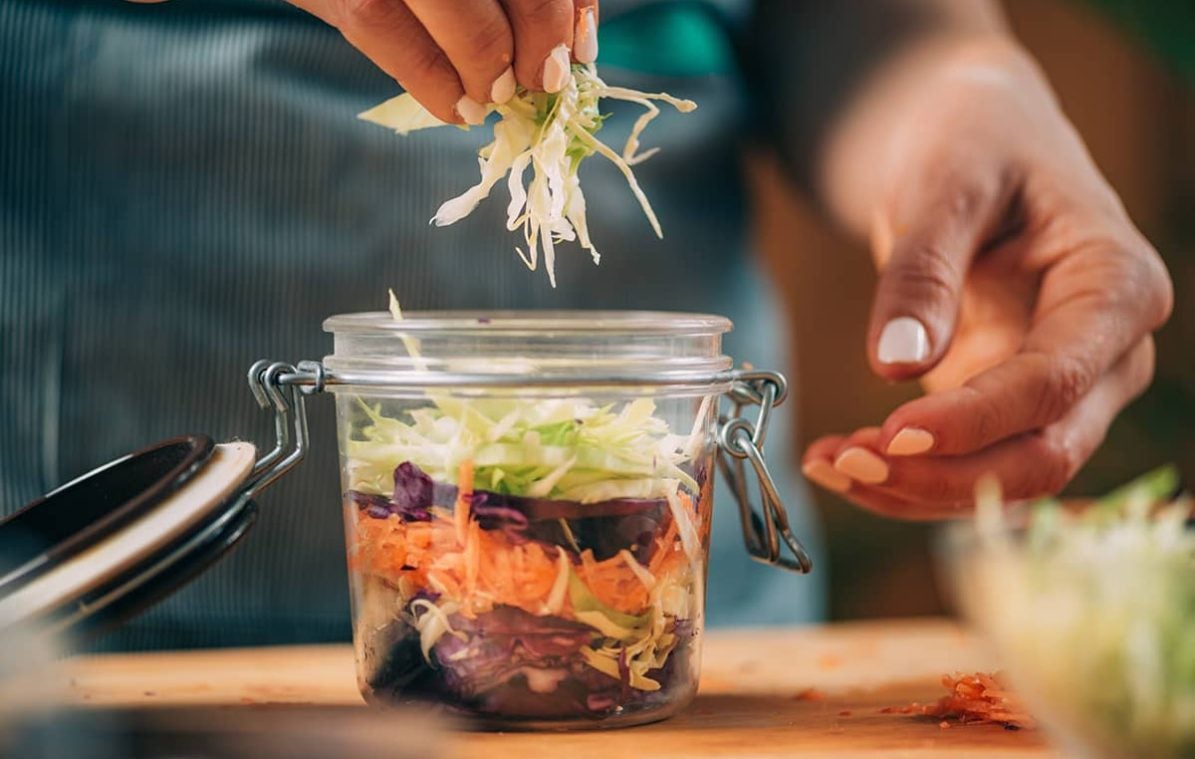Fermenting: A Hipster Trend or Genuinely Good For You?
 © foodspring
© foodspring
Unlike many new food trends that aim to be as Instagram-friendly as possible, fermentation is all about traditional classics. Sauerkraut, Korean kimchi, yogurt, air-dried salami. These fermented products may sound less hip than chia seeds and goji berries, but fermentation isn’t just a new hype.
It’s a centuries-old preservation method to make fresh food last longer. The health benefits for intestinal health you often hear touted are scientifically proven. Plus, fermented foods are versatile and offer a particularly intense taste. Who could say no to spicy kimchi or French camembert?
What is Fermentation?
Fermentation preserves food and also makes its nutrients more accessible for much longer. Microorganisms break down some of the food components and transform them. Sugar and starch become lactic acid during the fermentation process. The acidic environment prevents mold from growing and gives the fermented food its unique, sour taste.
There’s a difference between industrial fermentation and the kind you can carry out in your own kitchen, however.
If you want to ferment vegetables naturally for example, the microorganisms are already on the vegetables themselves. However, when fermenting yogurt or kefir, they have to be added. This usually happens industrially after the majority of existing microorganisms have been killed.
How to Ferment Vegetables at Home
For bacteria and enzymes to go through the desired fermentation process and not give you a moldy or fungal surprise, there are a few things to keep in mind. You’ll need airtight, sterile canning or mason jars, salt, spices, herbs to taste and, of course, chopped or grated vegetables – preferably organic. Which vegetables you use is up to you, but cabbage, carrots or beetroot lend themselves particularly well to this process. Push seasoned vegetables into a jar with a potato masher or just your hand. Add roughly 1 tablespoon of salt and gradually pour water over until your vegetables are swimming in brine. Make sure the vegetables are completely covered and not in contact with the air so they avoid getting moldy. Leave the jar to rest at room temperature for at least three to four weeks. Where and how long you can store your vegetables depends on which vegetable you use. It also depends on your personal taste. After trying it a few times, you’ll know how your fermented vegetables taste best.
How Healthy is Fermentation?
Strengthening the immune system, weight loss, cleansing your intestines — fermentation promises you all this. Hundreds of years ago people didn’t ferment cabbage to fit into their favorite jeans, though. Food had to be preserved for as long as possible so that nutrients could be obtained year-round, in a time when refrigerators and supermarkets weren’t around. As it turns out, these products not only have a long shelf life, they also contain many probiotics. These are viable microorganisms that have been shown to have a positive effect on your intestinal health and therefore your immune system too. They can also help you lose weight by being rich in fiber and keeping you fuller for longer. Be careful to ensure that you don’t heat it, like you can with sauerkraut from the supermarket, for example. That’s because heat kills microorganisms. This is just one more reason to unpack grandma’s mason jars and take fermentation into your own hands.
To benefit from the positive effects of fermented foods long term, try to incorporate them into your diet regularly. You could add yogurt to your cereal or perk up your salad with a little kimchi.
Sources for this article
We at foodspring use only high-quality sources, including peer-reviewed studies, to support the facts within our articles. Read our editorial policy to learn more about how we fact-check and keep our content accurate, reliable, and trustworthy.





























